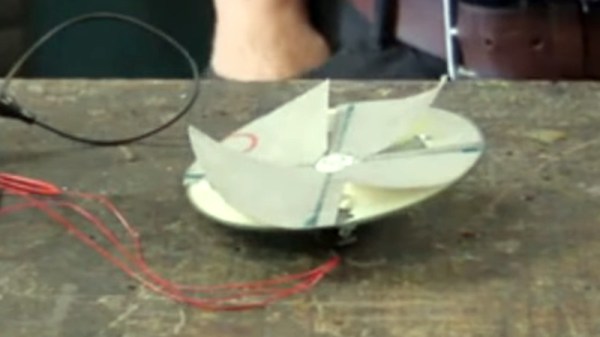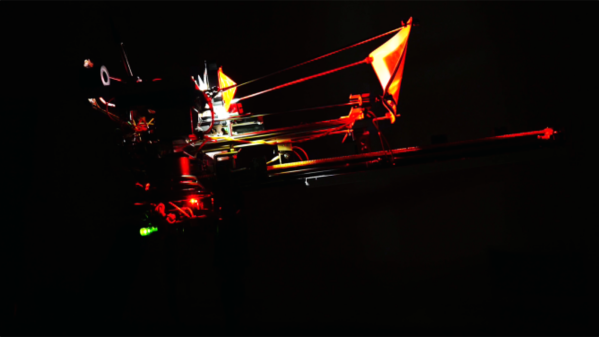As the world has moved towards sustainable energy sources over the last few years, it’s increasingly common to be close to a wind turbine. The huge turbines visible on the horizon from where this is being written are the upper end of the scale though, and along comes [Robert Murray Smith] with the opposite, probably the simplest and smallest wind turbine we’ve seen.
His use of a 3-phase motor from a CD-ROM drive as the generator isn’t particularly unexpected, these motors are ubiquitous and readily generate power when spun up. A simple 3-phase rectifier and a capacitor delivers a DC voltage that while the ready availability of switching converter modules should be relatively easy to turn into something more useful.
The clever part of this hack lies then in the rotor, it’s not the propeller-style bladed affair you might expect. Instead he takes a CD, as it’s the obvious thing to fit on a CD motor, and glues a piece of Tyvek on top of it. This is cut to form four flaps which make a rudimentary but effective turbine when the wind comes from the side. It’s beautifully simple, and we wish we’d thought of it ourselves. The whole thing is in the video below the break, so take a look.
Maybe this won’t solve the green energy requirement on its own, but we’ve shown you far larger fabric turbines in the past.














